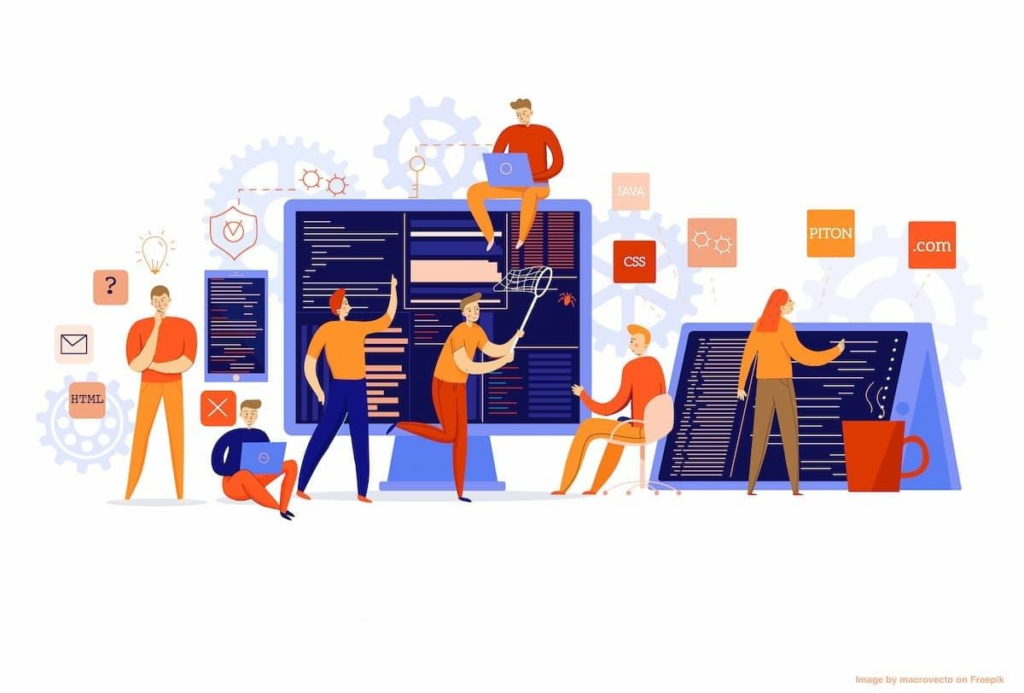In recent years, open-source software has emerged as a powerful force in the tech industries , steadily gaining traction across the United States and beyond. Once considered a niche approach primarily used by hobbyists and small-scale developers, open-source software is now challenging the dominance of proprietary systems in industries ranging from software development to cloud computing, cybersecurity, and artificial intelligence. This shift is reshaping how businesses operate, innovate, and compete, offering cost-effective, flexible, and collaborative alternatives to traditional software models.

What is Open-Source Software?
Open-source software refers to programs where the source code is freely available for anyone to view, modify, and distribute. Unlike proprietary software, which is tightly controlled by its creators and often comes with restrictive licensing fees, open-source software encourages collaboration and transparency. Developers, businesses, and even individuals can contribute to its development, tailoring it to meet specific needs. Popular examples include the Linux operating system, Apache web server, and the Mozilla Firefox browser.
The open-source movement is built on the principle that shared knowledge drives innovation. By allowing anyone to access and improve the code, open-source software fosters a community-driven approach to technology. In the U.S., this model is gaining momentum as companies and developers recognize its potential to reduce costs, enhance security, and accelerate innovation.
The Rise of Open-Source Software in the U.S.
The growing popularity of open-source software in the United States can be attributed to several factors. First, businesses are increasingly prioritizing cost efficiency. Proprietary software often requires expensive licenses, ongoing subscription fees, and costly upgrades. Open-source alternatives, on the other hand, are typically free or significantly cheaper, making them an attractive option for startups, small businesses, and even large enterprises.
For example, major U.S. companies like Google, Amazon, and Microsoft have embraced open-source software to power their operations. Google’s Android operating system, built on the open-source Linux kernel, dominates the global smartphone market. Similarly, Amazon Web Services (AWS) relies heavily on open-source tools like Kubernetes for managing cloud infrastructure. Even Microsoft, once a staunch defender of proprietary systems, has shifted its stance, acquiring GitHub in 2018—a platform that hosts millions of open-source projects—and contributing to open-source initiatives like the Linux Foundation.
The flexibility of open-source software is another key driver. Unlike proprietary systems, which often lock users into a specific vendor’s ecosystem, open-source software allows businesses to customize solutions to fit their unique needs. This adaptability is particularly valuable in fast-paced industries like fintech, healthcare, and e-commerce, where companies must quickly respond to changing market demands.

Open-Source and Innovation in Tech Industries
The collaborative nature of open-source software has made it a catalyst for innovation. In the U.S., developers from diverse backgrounds—whether working for tech giants, startups, or as independent contributors—can collaborate on projects, share ideas, and build solutions that push the boundaries of technology. This has led to breakthroughs in areas like artificial intelligence (AI) and machine learning.
For instance, TensorFlow, an open-source machine learning framework developed by Google, has become a cornerstone for AI research and development. Researchers and developers across the U.S. use TensorFlow to build everything from predictive analytics tools to autonomous vehicle systems. By making the framework open-source, Google has enabled a global community to contribute improvements, ensuring the software evolves rapidly to meet emerging needs.
Similarly, the rise of open-source databases like PostgreSQL and MongoDB has transformed data management. These tools offer robust, scalable alternatives to proprietary databases like Oracle, which can be prohibitively expensive for smaller organizations. U.S. companies, from startups in Silicon Valley to established firms in New York, are leveraging these open-source databases to manage vast amounts of data efficiently.
Challenging Proprietary Systems
The surge in open-source adoption is directly challenging the dominance of proprietary systems. Companies like Microsoft, Adobe, and Oracle have long relied on closed-source software to maintain market control, charging premium prices for their products. However, the rise of open-source alternatives is forcing these giants to rethink their strategies.
One notable example is the competition between Microsoft Windows and Linux-based operating systems. While Windows remains a dominant player in the desktop market, Linux has gained significant ground in servers, cloud computing, and even consumer devices. Distributions like Ubuntu and Red Hat Enterprise Linux are widely used by U.S. businesses for their reliability, security, and cost-effectiveness. According to a 2023 report by Red Hat, 90% of Fortune 500 companies use Red Hat’s open-source solutions in some capacity.

Open-source software is also making waves in the creative industry. Adobe’s suite of tools, such as Photoshop and Premiere Pro, has long been the standard for graphic design and video editing. However, open-source alternatives like GIMP and DaVinci Resolve are gaining popularity among U.S. creators who seek affordable yet powerful tools. These programs offer comparable features without the hefty price tag, appealing to freelancers, small studios, and educational institutions.
Security and Transparency: A Competitive Edge
One of the most compelling advantages of open-source software is its potential for enhanced security. Proprietary software often operates as a “black box,” where only the vendor knows how the code works. This lack of transparency can make it difficult to identify and fix vulnerabilities. In contrast, open-source software is scrutinized by a global community of developers, who can quickly identify and patch security flaws.
In the U.S., where cybersecurity threats are a growing concern, this transparency is a significant draw. Government agencies, financial institutions, and healthcare providers are increasingly turning to open-source solutions to protect sensitive data. For example, the U.S. Department of Defense has adopted open-source tools like Kubernetes to modernize its IT infrastructure, citing their flexibility and security benefits.
However, open-source software is not without challenges. Critics argue that its decentralized nature can lead to inconsistent support and documentation, making it less user-friendly for non-technical users. Additionally, while the code is freely available, businesses may still incur costs for implementation, maintenance, and training. Despite these hurdles, the benefits of cost savings, flexibility, and community-driven innovation continue to drive adoption.
The Role of Community and Collaboration
The success of open-source software hinges on its vibrant community of contributors. In the U.S., platforms like GitHub and GitLab have become hubs for collaboration, hosting millions of open-source projects. These platforms allow developers to share code, report bugs, and suggest improvements, creating a dynamic ecosystem that drives continuous improvement.
Open-source communities also foster inclusivity, enabling developers from diverse backgrounds to contribute. This democratization of technology has led to a more diverse talent pool in the U.S. tech industry, with contributions coming from students, independent developers, and professionals alike. Events like hackathons and open-source conferences, such as the annual OSCON (Open Source Convention), further strengthen this community by bringing together enthusiasts to share knowledge and showcase innovations.
The Future of Open-Source in the U.S.
As open-source software continues to gain popularity, its impact on the U.S. tech industry is undeniable. Analysts predict that by 2030, open-source solutions will power a significant portion of enterprise software, cloud infrastructure, and emerging technologies like AI and quantum computing. The shift is also influencing education, with universities across the U.S. incorporating open-source tools into their curricula to prepare students for a tech landscape increasingly dominated by collaborative development.
However, the rise of open-source software raises questions about the sustainability of the model. Many open-source projects rely on volunteer contributions or sponsorships from corporations, which can lead to burnout among maintainers or funding shortages. To address this, U.S. companies are exploring ways to support open-source development, such as through corporate sponsorships or paid contributor programs.
Conclusion
Open-source software is no longer just an alternative to proprietary systems—it’s a transformative force reshaping the U.S. tech industry. By offering cost-effective, flexible, and secure solutions, open-source software is empowering businesses, developers, and creators to innovate like never before. As the movement continues to grow, it’s clear that open-source is not just a trend but a fundamental shift in how technology is developed and deployed. For companies and individuals looking to stay competitive, embracing open-source software may be the key to unlocking new opportunities in an ever-evolving digital landscape.
References:






